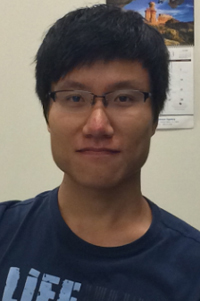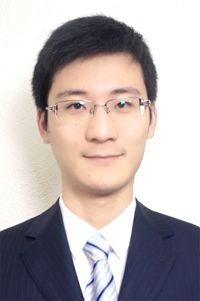A group of researchers in the Department of Mechanical Engineering and the Department of Materials Science and Engineering at Texas A&M University led by Dr. Xinghang Zhang has investigated defect dynamics in heavy ion (Krypton) irradiated nanotwinned Ag and revealed twin boundary-defect clusters interactions via in situ radiation.
The design of next generation nuclear reactors calls for materials with superior radiation tolerance. Under the extreme radiation conditions, a large number of defects and their clusters are generated and consequently result in mechanical instability of irradiated metallic materials. While studying radiation damage in nanotwinned Ag by in-situ irradiation technique at the IVEM facility at Argonne National Laboratory, Zhang’s students, Jin Li and Kaiyuan Yu discovered two interesting phenomena.
First, they identified twin boundary affected zones wherein time accumulative defect density and defect diffusivity are substantially different from those in twin interior. Additionally, in situ studies also revealed excellent resilience of twin boundaries in response to radiation: twin boundaries continue to change their geometry to facilitate the capture, transportation and removal of defect clusters. Furthermore twin boundaries can recover by absorbing opposite type of defects.
 “Without performing time accumulative studies, we would have missed the existence of twin boundary affected zones”, said Li.
“Without performing time accumulative studies, we would have missed the existence of twin boundary affected zones”, said Li.
 “This study provides further support for the implementation of twin boundaries as effective defect sinks for the design of radiation tolerant nanostructured metallic materials”, added Yu, who is now an assistant professor in China.
“This study provides further support for the implementation of twin boundaries as effective defect sinks for the design of radiation tolerant nanostructured metallic materials”, added Yu, who is now an assistant professor in China.
The paper, "In situ Study of Defect Migration Kinetics and Self-Healing of Twin Boundaries in Heavy Ion Irradiated Nanotwinned Metals" was published in the April 2015 issue in Nano Letters.
Zhang is an associate professor in the Department of Mechanical Engineering and an adjunct professor in the Department of Materials Science and Engineering at Texas A&M University. His group has expertise on nanomechanics in nanolayered and nanotwinned metals, radiation damage, and magnetic shape memory alloys.
The co-authors of this paper include Zhang’s former graduate students, Dr. Youxing Chen (postdoc at Los Alamos National Laboratory) and Dr. Miao Song (postdoc at University of Michigan), Dr. Haiyan Wang from the Department of Electrical and Computer Enigneering at Texas A&M, and Dr. Meimei Li and Dr. Mark Kirk, both from Argonne National Laboratory. This research is supported by NSF-DMR-Metallic Materials and Nanostructures Program. The IVEM facility at Argonne National Laboratory is supported by DOE-Office of Nuclear Energ